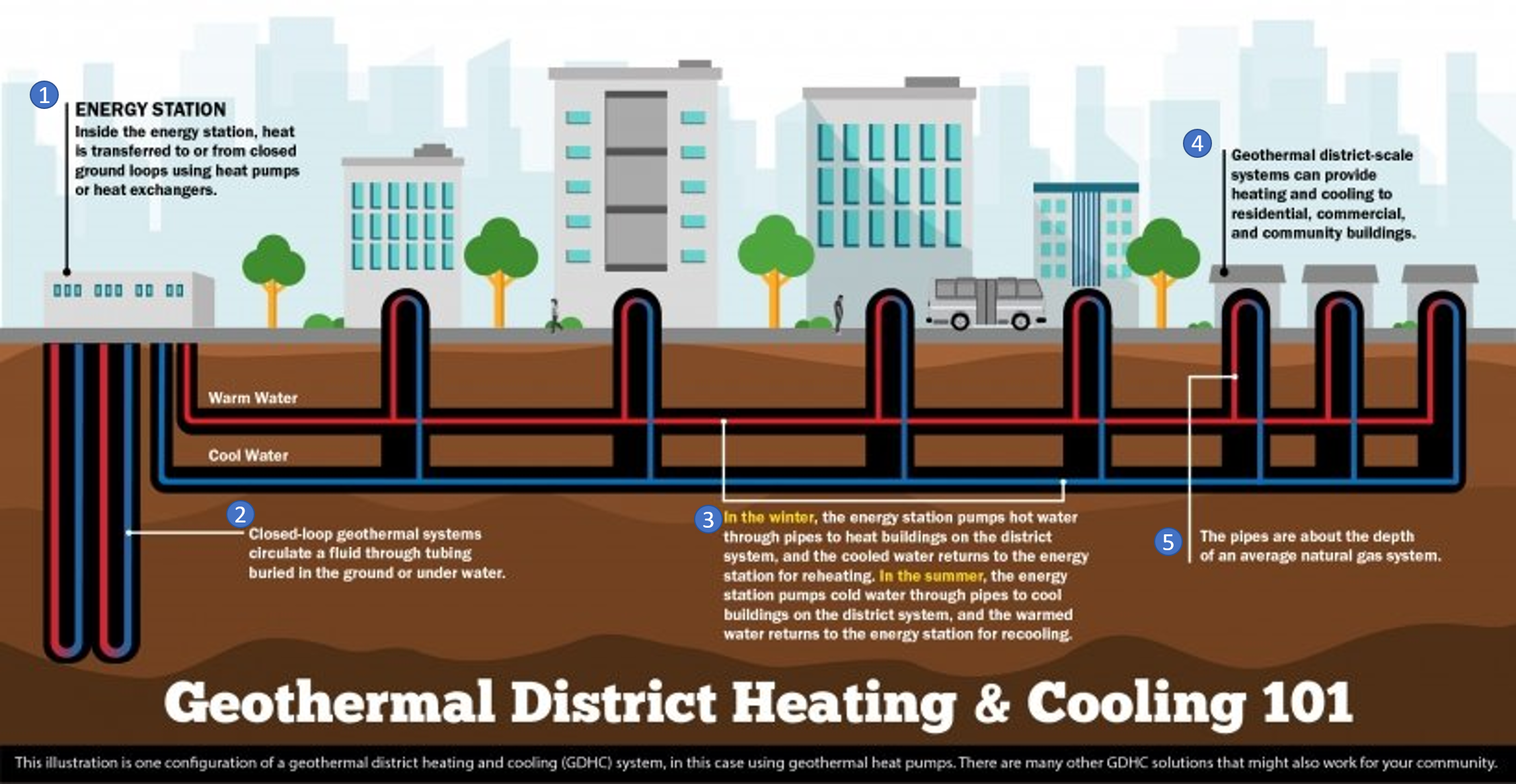Geothermal energy has a long tradition in human history, from thermal baths to heating and power generation. It represents an important resource of renewable energy.
Geothermal heating plants can come in a variety of types depending on the geological conditions, availability of geothermal water and the needed supply temperatures in the heating system. Depending on the configurations and available resources, geothermal water can be used directly if at sufficiently high temperatures, using heat exchangers. Alternatively, heat pumps can be utilized to raise the temperatures to the needed levels. If geothermal water is not available, other mechanisms can be used to exploit available energy from underground with or without heat pumps.

Source: Geothermal Technologies Office - Community Geothermal Heating and Cooling Design and Deployment. 1) Inside the energy station, heat is transferred to or from closed ground loops using heat pumps or heat exchangers. 2) Closed loop geothermal systems circulate fluid through tubing buried in the ground or underwater (or water from a river). 3) In the winter, the energy station pumps hot water through pipes to heat buildings in the district system, and the cooled water returns to the energy station for reheating; In the summer the energy station pumps cold water through pipes to cool buildings on the district system, and the warmed water returns to the energy station for freecooling. 4) Geothermal district-scale systems can provide heating and cooling to residential, commercial, and community buildings. 5) The pipes are about the depth of an average natural gas system.
The drilling works represent the majority of the costs of these systems so the depth at which energy sources are available will have a significant impact on the viability of the exploitation of geothermal energy.
Geothermal energy has a strong potential to be used in a cascading way from power generation at high temperatures to heating, healthcare, pools and greenhouses as the temperatures are reduced. In case higher temperatures are available, it is recommended to use geothermal energy for both power and heat production. For heating purposes, temperatures that are up to 100°C are used, either directly or with help of a heat pump.
Comments ()